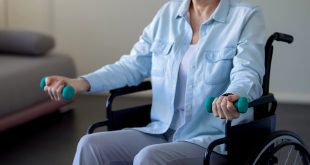Guidelines are very clear about the recommended amount of exercise for people with diabetes. But if you ask ‘when is the best time to exercise?’, it’s tough to get a straight answer. The research is often conflicting. Ultimately, timing should depend on your goals. If your goal is to just get it done, then the time of day won’t matter. But if you have a specific goal, timing might make a difference.
Before or after meals?
To improve blood glucose after meals, exercise 30 minutes after the start of a meal. This is because peak after-meal glucose values typically occur within 90 minutes, and initiating exercise during this time frame will help prevent glucose from rising out of target, thus protecting blood vessel walls from the damaging effects of excess glucose. This could be as simple as going for a walk right after your meal. For those leisurely meals that take a little longer, make sure to get out for your walk as soon as you finish eating.
To decrease the risk of low blood glucose, insulin users should wait for at least two hours after a rapid insulin injection before exercise, as this is when the insulin action is no longer at its peak. The biggest problem most insulin users face is the risk of their blood glucose going too low during exercise and for up to two days afterwards. Exercising within two hours after meals increases the risk of low blood glucose, even when insulin doses are decreased.
Time of day?
Morning workouts
For people with type 2 diabetes, exercising first thing in the morning without eating is not ideal. Exercise at this time promotes an even greater release of glucose-raising hormones, which heightens insulin resistance. This leads to an increase in blood glucose and not the lowering of blood glucose that is expected during moderate physical activity. Eating something before morning exercise helps limit the rise in glucose.
However, for people with type 1 diabetes, exercise done in the morning (e.g. 7:00 am) before eating has a lower risk of late-onset hypoglycemia compared to late afternoon (e.g. 4:00 pm) exercise, and it also improves blood glucose control on the subsequent day.
When considering your metabolism, late morning workouts may have an edge. Morning exercise appears to increase the ability of muscle cells to metabolize sugar and fat, and this type of effect will have a benefit on weight and type 2 diabetes.
Afternoon workouts
For people with type 1 diabetes, afternoon exercise (e.g. at 4:00 pm, after having had lunch at noon) has a higher risk of late-onset hypoglycemia than morning exercise.
For those with type 2 diabetes, high intensity interval training done three hours after lunch reduces blood glucose levels.
Evening workouts
For people with type 2 diabetes, resistance exercise done both before and after dinner reduces after-meal blood glucose. However, after-dinner resistance exercise also reduces triglyceride levels, which helps to decrease cardiovascular risks.
If you are competitive and looking to improve your performance, evening exercise may feel easier because less oxygen is required, making workouts more effective.
Do you dread the thought of setting an early alarm but are worried about how evening exercise will affect your sleep? Easy-to-moderate exercise before bedtime can actually promote deep sleep. High-intensity interval training can be performed in the early evening (e.g. 7:00 to 8:00 pm) without subsequent sleep disruptions and may have a positive effect on appetite‐related hormones. However, vigorous exercise two hours or less before you hit the sack could cause insomnia.
Final considerations about the best time to exercise
Morning exercise increases alertness and helps cognitive function. It also has the advantage that no matter what else happens during the day, you have completed your physical activity regimen. Evening exercise can help you decompress after a busy day and help manage stress. But if you are not wholly committed to an exercise routine, if you leave it to the evening, you run the risk of bailing.
Still not sure when to exercise? Don’t worry. There is no bad time to exercise. Find the time that you enjoy and work with your diabetes team to develop strategies to keep your blood glucose in target.
 Diabetes Care Community Learn, connect and care
Diabetes Care Community Learn, connect and care




